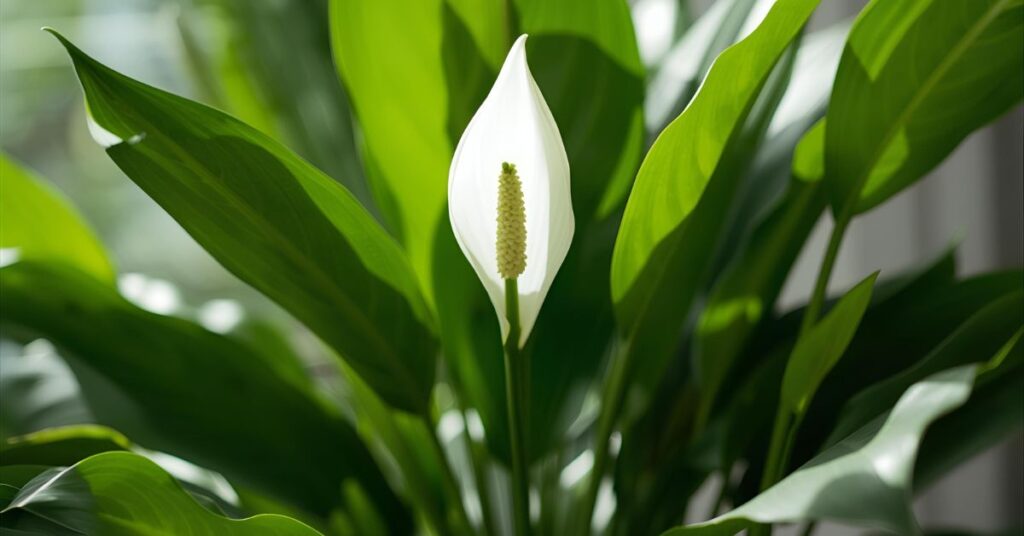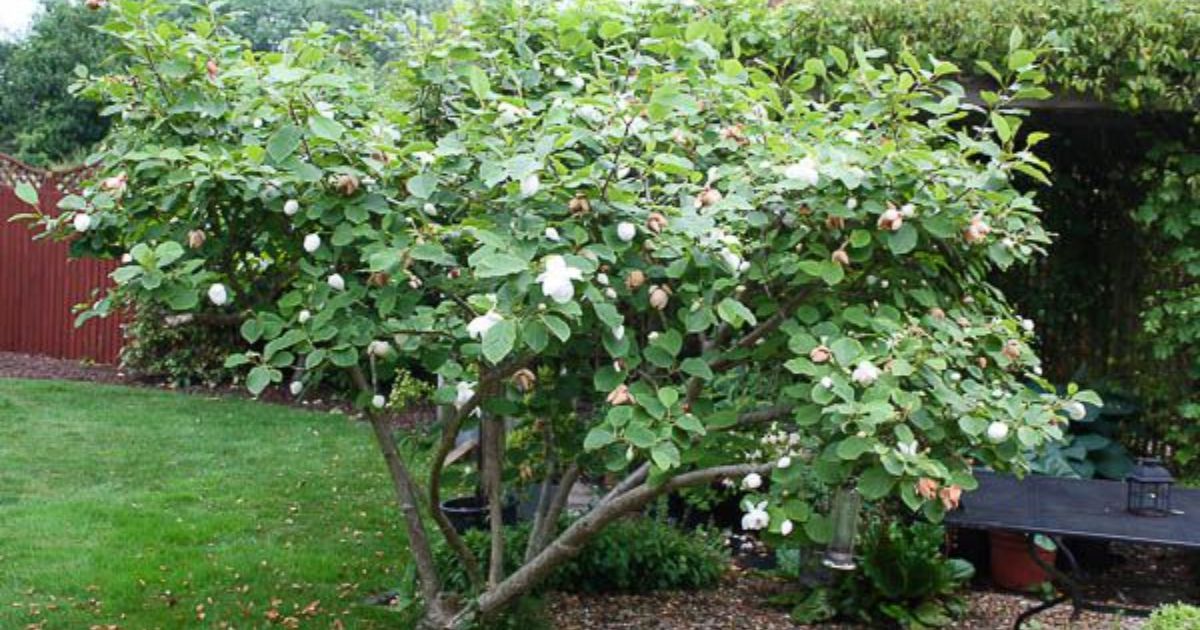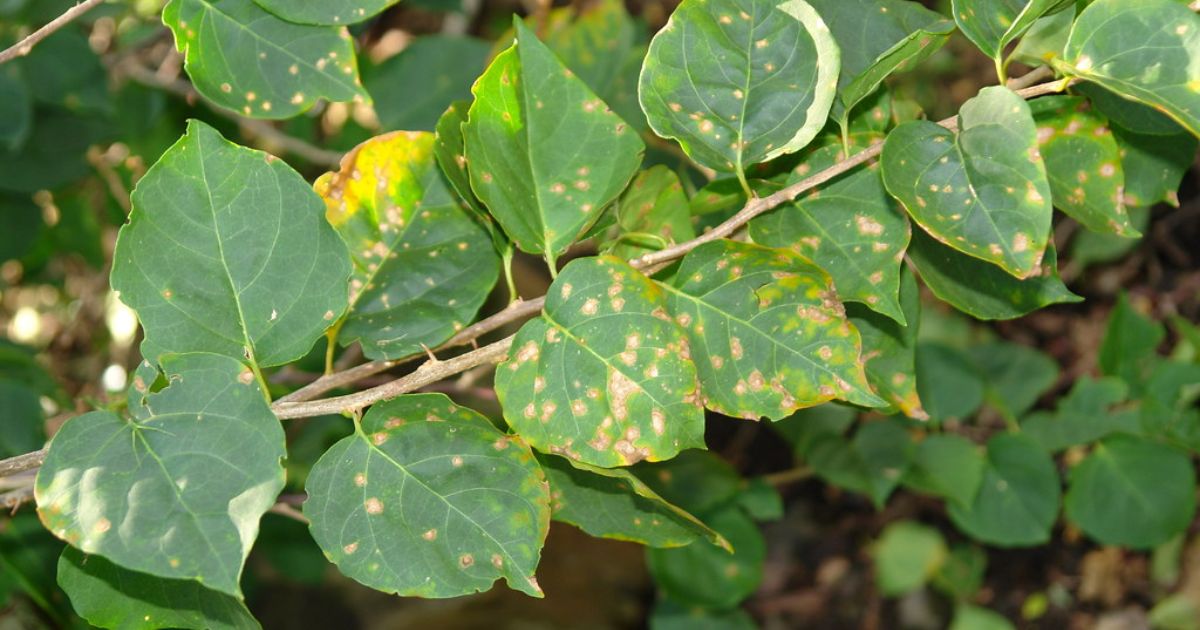Peace lilies are among the most beloved houseplants, renowned for their exquisite white and glossy green foliage blooms that brighten up any room. Beyond their beauty, they’re also praised due to their ability to filter the air, which makes them a popular option for both new and experienced plant enthusiasts. While peace lilies are relatively easy to maintain, they still require the right environment, watering routine, and care to truly thrive indoors.
In this Best Peace Lily Care Guide: How to Grow and Maintain Healthy Plants, we’ll walk you through everything from ideal growing conditions and watering tips to troubleshooting common problems. Whether you want to encourage more blooms, revive a drooping plant, or simply keep your peace lily looking its best, this guide covers all the essential steps to help you enjoy a healthy, long-lasting plant.
Understanding Peace Lilies
The peace lily (Spathiphyllum) is a tropical plant that originally comes from the warm, humid regions of Central and South America. Because of its lush beauty and ability to adapt well to indoor environments, it has become one of the most popular houseplants around the world.
Visually, peace lilies are easy to recognize. They feature broad, glossy green leaves that arch elegantly, giving any area a hint of organic beauty. The striking white “flowers” that many admire are actually spathes—modified leaves that surround the tiny true blooms on the spadix. These spathes give the peace lily its signature look, making it a favorite in homes and offices alike.
It’s worth noting that despite their name, peace lilies are not true lilies. Rather, they are members of the Araceae family, which includes other popular indoor plants like philodendrons. This distinction matters when learning about peace lily plant care, since their needs differ from traditional lilies. Thanks to their adaptability, peace lily care indoors is relatively straightforward, making them a great choice for anyone looking to grow a healthy and attractive plant.
If you want your bananas to stay perfect longer, check out our tips on how to prevent bananas from splitting.
Best Growing Conditions for Peace Lilies

Creating the right environment is the key to helping your peace lily thrive indoors. These tropical plants are naturally adapted to the shaded forest floors of Central and South America, so they flourish in conditions that mimic their native habitat.
Light: Peace lilies prefer bright, indirect sunlight. Direct sun can scorch their glossy leaves, leaving behind brown patches, while too little light may prevent blooming. Placing your plant near a north- or east-facing window is ideal. If you’re growing a variety like the Spathiphyllum Domino, its striking variegated leaves need just the right balance of filtered light to maintain their unique patterns.
Temperature: For healthy growth, keep your peace lily in a warm environment between 18 and 27°C (65 to 80°F). Because they are susceptible to chilly drafts, keep them away from open windows in winter or air conditioners that blow directly on the plant.
Humidity: Since peace lilies come from humid tropical regions, they thrive in higher humidity levels. If your indoor air is dry, especially during colder months, misting the leaves or placing a humidifier nearby can make a big difference. Grouping plants together is another simple way to boost the humidity around them.
By replicating these conditions, you’ll set the foundation for success in how to care for a peace lily plant indoors. When the environment is right, peace lilies reward you with lush foliage and those signature elegant white blooms.
How to Water a Peace Lily
Proper watering is one of the most important aspects of caring for a peace lily plant. Too little or too much water can quickly affect its health, so understanding your plant’s needs is essential.
Rule of Thumb: Water your peace lily once the top 1–2 inches of soil are dry. You can check this by gently sticking your finger into the soil—if it feels dry at that depth, it’s time to water. Underwatering can be dangerous, but so can overwatering, so err on the side of caution.
Signs of Underwatering: When a peace lily doesn’t get enough water, its leaves will begin to droop. This is often the first visible sign that your plant needs hydration. Both the Spathiphyllum Domino and Spathiphyllum Sensation respond similarly to underwatering, with leaves losing their firm, glossy texture.
Signs of Overwatering: On the other hand, too much water can cause yellowing leaves and even root rot, which may permanently damage your plant. Make sure your pot has proper drainage, as well as preventing the plant from being submerged in water.
Water Quality: Peace lilies are sensitive to chemicals like chlorine and fluoride often found in tap water. Using filtered or distilled water helps prevent brown leaf tips and keeps your plant healthy over the long term.
By following these watering guidelines, you’ll support strong, vibrant growth and reduce the risk of issues such as peace lily drooping, ensuring your indoor tropical plants thrive. Regular monitoring and adjusting your watering routine based on your plant’s response is key to watering peace lilies correctly. For lush strawberry beds, follow our tips on how far apart to plant strawberries.
Soil and Potting Needs for Peace Lilies

Selecting the appropriate pot and soil is essential for how to keep a peace lily plant alive and thriving. Peace lilies prefer a well-draining soil mix that retains some moisture without becoming waterlogged. A peat-based potting mix or a high-quality indoor plant soil mix works perfectly, providing both aeration and nutrients for healthy root growth.
Repotting: As your peace lily grows, it may become root-bound. To prevent this, repot the plant every 1–2 years. In addition to giving the roots more space to spread out, repotting revitalizes the soil and introduces fresh nutrients for more robust growth.
Pot Selection: Always choose a pot with adequate holes for drainage to keep water from collecting at the bottom. Root rot and other issues might result from standing water problems that threaten the plant’s health.
By using the best soil for peace lily and following a proper repotting routine, you’ll help your plant develop a robust root system, vibrant leaves, and more consistent blooms. Whether you’re caring for a small Spathiphyllum Domino or a larger variety like Spathiphyllum Sensation, proper soil and potting practices are essential for long-term success.
Fertilizing Peace Lilies
Proper fertilization is key to keeping your peace lily lush, green, and blooming. A balanced, water-soluble fertilizer should be applied during the active growing season once a month, usually in the spring and summer. This provides essential nutrients that support vibrant leaves and encourage the signature white blooms.
Be careful to avoid overfertilization, as too much fertilizer can burn the leaf tips, causing unsightly brown edges. Always adhere to the fertilizer label’s instructions and consider diluting it slightly for sensitive varieties like Spathiphyllum Sensation, which can be more prone to nutrient burn.
Proper irrigation and fertilizer work best together. Knowing how to water peace lily correctly ensures that nutrients are absorbed efficiently without stressing the plant. Regular feeding, paired with the right light and moisture, can also help you achieve one of every peace lily owner’s goals: how to make a peace lily bloom consistently throughout the growing season.
By following a balanced fertilizing routine, your peace lily will maintain healthy foliage and reward you with more frequent, long-lasting blooms.
How to Make a Peace Lily Bloom
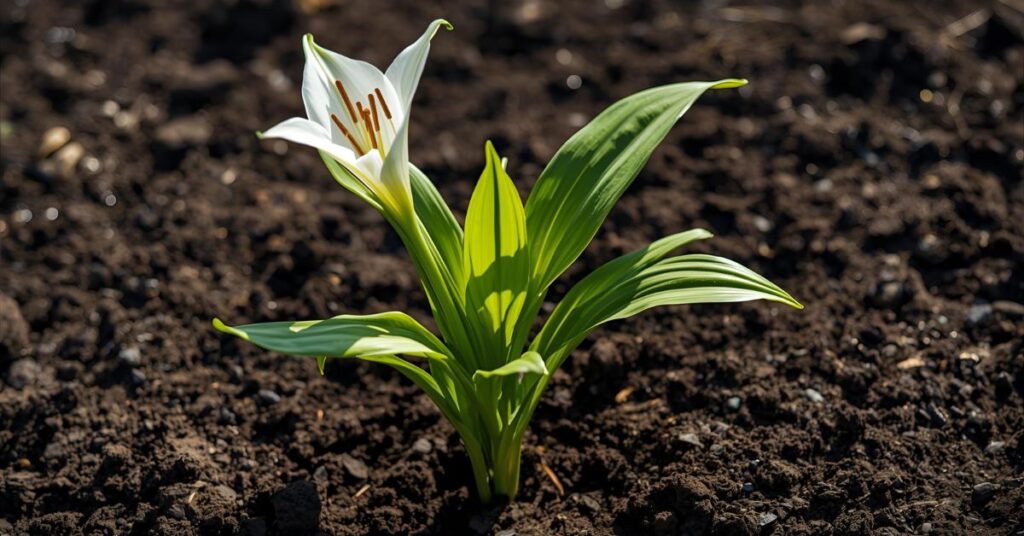
One of the most rewarding aspects of growing a peace lily is enjoying its elegant white blooms. However, sometimes indoor peace lilies may not flower as expected. Understanding the right conditions and care practices can help you encourage consistent blooming.
Adequate Indirect Light: Peace lilies require bright, indirect sunlight to initiate flower production. While they tolerate low light, insufficient light is often the reason for a peace lily not flowering. Placing your plant near a north- or east-facing window ensures it receives enough light without burning its leaves.
Proper Watering and Feeding Schedule: Maintaining the right moisture level is crucial. Water when the top 1–2 inches of soil are dry and use a balanced, water-soluble fertilizer once a month during the growing season. Following a regular feeding and watering routine helps support energy for flower development, making it easier to get your peace lily to bloom.
Trim Old Blooms: Eliminating wasted flowers promotes new growth and keeps the plant looking neat. Cut the old spathes down to the base of the stem. This redirects energy to producing fresh blooms rather than maintaining dying flowers.
By combining proper light, consistent watering and feeding, and careful pruning, you can enjoy the full beauty of your peace lily indoors. Following these steps is essential for anyone learning how to grow a peace lily successfully and keep it flowering year after year.
Common Problems and Solutions
Even though peace lilies are relatively easy to care for, they can encounter a few common issues. Recognizing the signs early and addressing them promptly will support the growth and health of your plant.
Yellow Leaves: One of the most common peace lily problems is yellowing leaves.This usually occurs due to overwatering or exposure to too much direct sunlight, which can stress the plant. To fix this, reduce watering and Place the plant in an area that receives plenty of indirect light.
Brown Tips: Brown leaf tips often indicate environmental stress. Causes include low humidity, chlorine or fluoride in tap water, or overfertilization. Using filtered or distilled water, maintaining proper humidity, and adjusting your fertilizing routine can prevent further damage.
Drooping: A drooping peace lily can signal that the plant is either underwatered or root-bound. Check the soil moisture and water as needed, or consider repotting if the roots have outgrown the container. Regular monitoring ensures the plant remains firm and vibrant.
Pests: Although they are not very frequent, pests including mealybugs, spider mites, and aphids can occasionally harm peace lilies. To preserve your plant, treat infestations as quickly as much as you can with neem oil or insecticidal soap.
By staying vigilant and responding to these signs, anyone learning how to grow a peace lily help stop small problems from growing into bigger ones. Proper light, water, and care will keep your peace lily thriving indoors and looking its best.
Peace Lily Toxicity
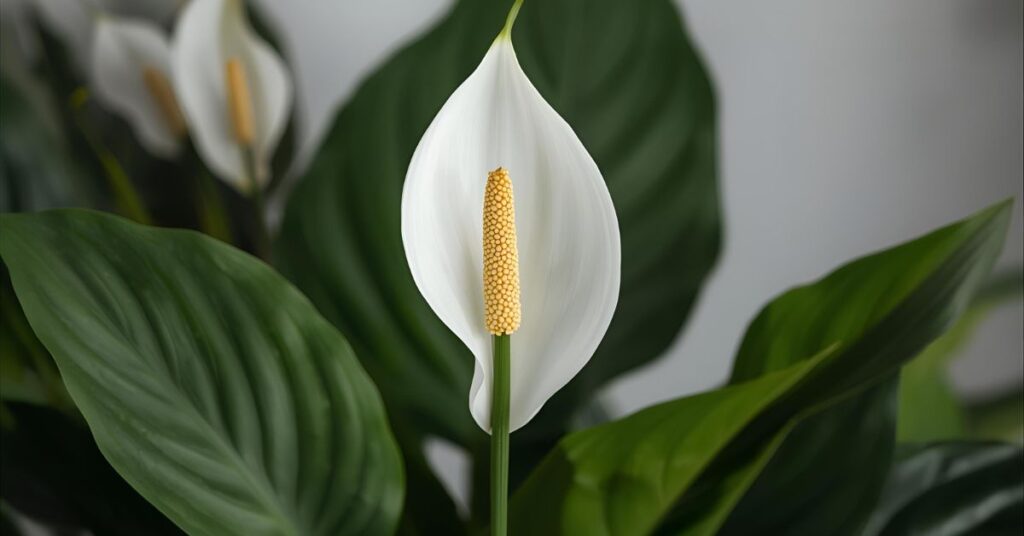
While peace lilies are beautiful and beneficial indoor plants, it’s important to be aware of their toxicity. All parts of the peace lily contain compounds called calcium oxalates, which can be harmful if ingested by cats, dogs, or humans. Symptoms of ingestion may include irritation of the mouth, difficulty swallowing, and stomach upset.
To ensure safety, always handle your peace lily carefully and place it out of reach of pets and children. If you have curious pets or small children at home, consider placing your plant on high shelves or in hanging planters to prevent accidental ingestion.
For pet owners and plant lovers alike, it’s wise to ask: are peace lilies toxic? Yes, they are, which is why taking precautions is essential. When cared for responsibly, a peace lily can continue to safeguard your house and give beauty to your indoor garden.
Additionally, if you’re wondering whether a peace lily is peace lily pet safe, the answer is no—but with careful placement and monitoring, you can enjoy the plant without risk.
Seasonal Peace Lily Care
Understanding how to adjust care for each season is essential to maintaining the health of your peace lily year-round. Seasonal changes affect light, temperature, and growth, so tailoring your routine ensures your plant thrives.
Spring and Summer: When the growth season is active, peace lilies experience increased growth and flowering. Provide more water to keep the soil consistently moist, and once a month, treat the plant with a balanced fertilizer. These circumstances support the maintenance of colorful foliage and promote flowers. Similar seasonal adaptations can also be advantageous for indoor-grown varieties such as calla lily and arum lily.
Fall and Winter: Growth naturally slows during cooler months. Reduce watering to prevent overwatering, and skip fertilization since the plant isn’t actively producing new leaves or flowers. Ensuring your peace lily has moderate light and stable indoor temperatures during this period supports long-term health.
By following peace lily seasonal care guidelines, you can provide optimal conditions throughout the year. Adjusting water, fertilizer, and light based on the season is an easy yet efficient method to maintain a thriving indoor plant. This approach is an essential part of indoor plant care, helping your peace lily remain lush, green, and flowering year after year.
Conclusion
Caring for a peace lily doesn’t have to be complicated. By creating ideal growing conditions, keeping a steady watering and fertilizing routine, and addressing common problems early, you can ensure your plant stays healthy and vibrant. Remember to adjust care with the seasons, prune old blooms, and use proper soil and pots to support long-term growth.
Beyond their striking appearance, peace lilies also offer natural air-purifying benefits, making them a beautiful and functional addition to any indoor space.
With the right care, your peace lily will thrive for years, rewarding you with lush green leaves and elegant white blooms. Enjoy the charm and freshness that this tropical plant brings to your home!
FAQs:
1. Why is my peace lily not blooming?
If your peace lily isn’t flowering, it’s usually due to insufficient light, inconsistent watering, or a lack of nutrients. Ensure your plant receives bright, indirect sunlight, follow a proper watering and feeding schedule, and remove old blooms to encourage new growth.
2. How often should I water my peace lily?
A good rule of thumb is to water your peace lily when the top 1–2 inches of soil are dry. Underwatering results in drooping, while overwatering can produce yellowing leaves and root rot. To maintain the ideal moisture content, always inspect the soil before watering.
3. Can a peace lily live in low light?
Yes, peace lilies can survive in low-light conditions, but growth may slow and flowering may be reduced. For healthy blooms, place the plant in a spot with bright, indirect light. Low light is fine for foliage but isn’t ideal if you want regular flowering.
4. How do I revive a dying peace lily?
To revive a struggling plant, first assess the problem: check for overwatering, underwatering, pests, or root-bound conditions. Trim yellow or brown leaves, repot if necessary, and adjust light, water, and humidity levels. With proper care, a stressed peace lily can often recover and regain healthy foliage.

